CAA News Today
John Richardson Will Be the Next CAA President
posted by Linda Downs — October 30, 2015
The College Art Association is pleased to announce that at its October Board meeting, John Richardson was elected as the new President of CAA. He succeeds Dewitt Godfrey and will serve a two-year term beginning May 1, 2016. Richardson is currently CAA’s Vice President of External Affairs.
Richardson chairs the James Pearson Duffy Department of Art and Art History at Wayne State University, Detroit, MI. Richardson says of his election, “I’m honored to be selected for the position of the President. It is a once-in-a-lifetime experience. During my term I will provide leadership in the implementation of the CAA strategic plan with a particular focus on rejuvenating the Annual Conference and being an advocate for the membership.”
Richardson earned his graduate degree in sculpture from the University of Wisconsin-Madison and his undergraduate degree from the University of Puget Sound in Tacoma, Washington. He is represented by Causey Contemporary Gallery, New York, NY.
Founded in 1911, the College Art Association is the preeminent learned society in higher education visual arts and curatorial practice with a membership of over 10,000 individuals and institutions internationally. The CAA aims to promote the visual arts and their understanding through committed practice and intellectual engagement.
Tania Bruguera Will Deliver Conference Keynote Address
posted by Christopher Howard — October 29, 2015
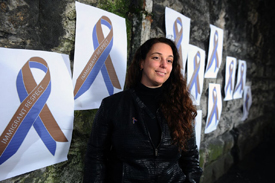 Tania Bruguera, a Cuban artist who works in performance, installation, and video, will deliver the keynote address during Convocation at CAA’s 2016 Annual Conference in Washington, DC. Convocation, which includes the presentation of the 2016 Awards for Distinction, will take place on Wednesday evening, February 3, from 5:30 to 7:00 PM. Free and open to the public, this event will be held at the Washington Marriott Wardman Park Hotel. The title of Bruguera’s talk will be “Aest-ethics: Art with Consequences.”
Tania Bruguera, a Cuban artist who works in performance, installation, and video, will deliver the keynote address during Convocation at CAA’s 2016 Annual Conference in Washington, DC. Convocation, which includes the presentation of the 2016 Awards for Distinction, will take place on Wednesday evening, February 3, from 5:30 to 7:00 PM. Free and open to the public, this event will be held at the Washington Marriott Wardman Park Hotel. The title of Bruguera’s talk will be “Aest-ethics: Art with Consequences.”
Bruguera’s work on issues of free speech and immigration and her fearlessness to speak out against forces of oppression—many of which she has experienced firsthand in Cuban prisons—is important and undeniably relevant to not just the art and academic worlds, but also the world at large. This summer, the New York City Department of Cultural Affairs and the Mayor’s Office of Immigrant Affairs jointly appointed Bruguera as their first artist-in-residence. The announcement of the position also revealed that the Museum of Modern Art had acquired its first work by Bruguera: Untitled (Havana, 2000), a large-scale installation that combines performance and video. First shown at the 2000 Havana Biennial, the work, like many others by Bruguera, deals with liberty and authority. The artist was also recently nominated as a finalist for the prestigious 2016 Huge Boss Prize, awarded every two years by the Solomon R. Guggenheim Museum to an artist who has made a visionary contribution to contemporary art.
Bruguera’s work has been exhibited in museums and biennials around the world; she has also lectured and performed internationally. A faculty member at the School of the Art Institute of Chicago, she lives and works in Havana and Chicago. Bruguera earned MFAs from the School of the Art Institute of Chicago and Instituto Superior de Arte in Cuba. Her BFA is from Escuela Nacional de Bellas Artes San Alejandro. Bruguera is the founder and director of Cátedra Arte de Conducta, the first program of performance-art-studies in Latin America, hosted by Instituto Superior de Arte.
News from the Art and Academic Worlds
posted by Christopher Howard — October 28, 2015
Each week CAA News publishes summaries of eight articles, published around the web, that CAA members may find interesting and useful in their professional and creative lives.
How to Document Heritage Sites under Threat
A major conference in Berlin to be held November 19–20 will bring together advocates to discuss how digital technology is being used to preserve the world’s heritage sites. “Resilience through Innovation” has been organized by CyArk, a California-based nonprofit organization that uses digital scanning to create a free-to-access online three-dimensional archive of heritage sites. (Read more from the Art Newspaper.)
Ten Art-World Survival Tips They Didn’t Teach You in School
So you want to get a master of fine arts degree. But how well will your MFA program prepare you for life as a professional artist? The number of graduates from art MFA programs has doubled from 1987 to 2012, while BFA graduates have nearly tripled during the same time frame. Artnet News asked current students and recent graduates to share their advice for getting ahead. (Read more from Artnet News.)
A Look at the Museum of the Future
Museums are flirting with change that may be more revolutionary than at any other point in their history. The forces rocking the technology world—cheaper screens, miniaturized mechanics, and increased computing power—are prompting a rich period of experimentation in exhibition design. (Read more from the Wall Street Journal.)
The Digital Innovations Seven LA Museums Are Most Excited About
Even though museum collections often go back hundreds—even millions—of years, these visitor-reliant institutions must stay relevant in the twenty-first century. There is healthy debate about how much technology is too much, and when and where within a museum it is appropriate to use technology, but there is little debate about the fact that technology is here to stay. (Read more from the Los Angeles Times.)
Back to the Drawing Board: The Crafty Art Students Rejecting Digital
Once it had connotations of classroom cutting and sticking or haberdashery departments, but today the word “craft” represents a movement of makers investing time in mastering skills, experimenting with design, and laboring over one handmade object at a time. Against a backdrop of the 3D printing revolution, craft is still going strong, and many young people across the UK are still interested in learning traditional techniques such as stone carving, silver smithing, and wood work. (Read more from the Guardian.)
For Obamas, a More Abstract Choice of Art
This past summer, President Barack Obama spent nearly an hour at the Whitney Museum of American Art, the nation’s largest repository of paintings and sketches by Edward Hopper. He also could have seen a few Hoppers at home. Two of the artist’s classic depictions of the American landscape—Cobb’s Barns, South Truro and Burly Cobb’s House, South Truro—now hang on the southeast side of the Oval Office and are part of a years-long shift by Obama and his wife, who have put their more modern aesthetic imprint on the White House. (Read more from the New York Times.)
Going through the Motions? The 2015 Survey of Faculty Workplace Engagement
Employee engagement is an important metric that can gauge how loyal and intrinsically interested people are in their work. So how engaged are faculty members, and how do they compare to other kinds of workers? A new Inside Higher Ed survey suggests that while faculty members over all aren’t actively engaged in their work, those at smaller, private institutions tend to be the most emotionally and intellectually connected to what they do. (Read more from Inside Higher Ed.)
The Academic Book as Expensive, Nihilistic Hobby
I just got word from my editor at Northwestern University Press that my first (and last) academic monograph, Kafka and Wittgenstein, has been sent to the printer. My feelings about this range from mild pride, to medium-grade nihilism, to wide-ranging annoyance at a publication model that still depends on a tenure system that is largely extinct. (Read more from Vitae.)
The Role of Contextual Studies in Art School Education in Scotland
posted by Sarah Smith, Joint Head of the Forum for Critical Inquiry, the Glasgow School of Art, and member of CAA’s International Committee — October 26, 2015
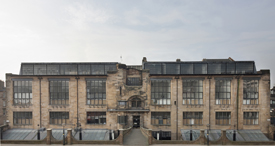 Last April, my colleagues and I in the Glasgow School of Art’s Forum for Critical Inquiry organized a seminar on “The Role of Critical and Contextual Studies in Art School Education in Scotland,” which aimed to facilitate and stimulate scholarly debate on art and design higher education and to establish a regional network of Scottish faculty who teach Critical and Contextual Studies. The seminar was funded by the UK’s Council for Higher Education in Art and Design and formed part of their Regional Seminar programme.
Last April, my colleagues and I in the Glasgow School of Art’s Forum for Critical Inquiry organized a seminar on “The Role of Critical and Contextual Studies in Art School Education in Scotland,” which aimed to facilitate and stimulate scholarly debate on art and design higher education and to establish a regional network of Scottish faculty who teach Critical and Contextual Studies. The seminar was funded by the UK’s Council for Higher Education in Art and Design and formed part of their Regional Seminar programme.
Since 1962–63, university level art and design education in the UK has included an “academic” element, which was originally referred to as the History of Art and Design and Complementary Studies and is now better known as Critical and Contextual Studies (CCS). This element was introduced to give “degree equivalence” to what was initially a quite technically focused diploma by providing context to studio practices and developing a broader range of skills in students. Topics taught under this rubric include histories of art and design, film and media histories, critical theory, aesthetics, and, more recently, curatorial and art writing practices. Recent changes to UK art and design higher education, precipitated by diverse drivers such as funding cuts and the emergence of the PhD by practice as the terminal degree, has brought the debate about the role of CCS back into sharp focus. A central question for this debate is: if the role of CCS is no longer “to elevate” and “lend academic credibility” to studio practice, as was originally the case (outlined in the Coldstream Reports of 1960 and 1970), then what do we see as its role both now and in the future?
This is a recurring (if not perpetual) question for art schools in the UK and Ireland where CCS still represents a sort of “minor” subject that underpins the “major” studio practice; the relationship between the two is never quite at ease. The question has been addressed by my institution, the Glasgow School of Art, three times through departmental review since I began teaching there in 2000, and it has not been satisfactorily answered to date. The most recent iteration was prompted by a recommendation in the Glasgow School of Art’s Fine Art 2013 Periodic Review, which advised that CCS be divided and brought under the management of the institution’s three schools (Fine Art, Design, and Architecture) rather than be managed centrally and provide cross-institution curriculum.
Across the UK there exists a variety of curricular and organizational CCS models, which are reflected in the different approaches of the four Scottish art schools: Glasgow School of Art; Edinburgh College of Art, University of Edinburgh; Duncan of Jordanstone College of Art and Design, University of Dundee; and Gray’s School of Art, Robert Gordon University, Aberdeen. By focusing on the regional context, we hoped to identify issues and opportunities that may be unique to the Scottish higher education sector, which differs from the rest of the UK in a range of ways, including a tendency for four-year degree programs; no tuition fees for home or European Union students; the ability of Scottish students to start university at the age of seventeen; and a focus on educational breadth at the undergraduate level.
Thirty-five delegates from across Scotland and the UK attended the seminar, and for the opening keynote, Dr. Annebella Pollen from the University of Brighton presented an overview of a piece of pedagogic research that was recently published in Design and Culture.[1] In the paper, titled “Theory and Practice: Objective and Subjective?,” she critiques the perception of the “academic element” of studio-based programs as lacking in subjectivity and personal investment, instead arguing that design history is an embodied, reflective, and affective discipline.
 Two lecturers from each of the four Scottish art schools then gave short presentations on CCS within their institutions, offering either overviews of their respective curricular and operational models or focusing on examples of innovative practice that, for instance, combine studio and CCS methodologies and techniques (such as visual presentation, collage, assemblage, collecting, curating, and writing) to design CCS courses.
Two lecturers from each of the four Scottish art schools then gave short presentations on CCS within their institutions, offering either overviews of their respective curricular and operational models or focusing on examples of innovative practice that, for instance, combine studio and CCS methodologies and techniques (such as visual presentation, collage, assemblage, collecting, curating, and writing) to design CCS courses.
Numerous differences emerged in the various models and approaches employed by each of the four institutions. It was clear that operational models have a considerable impact on learning and teaching practices. For example, the Edinburgh College of Art and the Glasgow School of Art can offer team-taught courses and a diverse range of electives because they have separate CCS departments that work across programs. In contrast, the Duncan of Jordanstone College of Art and Design faculty tend to be attached to specific programs and work in a more isolated way or, when possible, in pairs. (Certainly there is no sense in having a strategic approach to CCS provision—and related research—at an institutional level at Duncan of Jordanstone.) Perhaps because CCS at Gray’s School of Art has been through several different operational and pedagogic iterations over the past ten years (from being a separate department, to being fully integrated with studio, and then back to being a separate department), the school seems well placed to propose courses that endorse innovative practices to engage students with CCS.
The closing keynote by Neil Mulholland from the Edinburgh College of Art, provocatively titled “Juche: Art School State of Mind,” was based on his article for the New Art West Midlands 2014 exhibition catalogue and is part of his sustained research project into art school pedagogy.[2] His central thesis posits that, while there is an exciting scope for developing radical pedagogies within art schools, the insular culture fostered therein since the mid-twentieth century stymies opportunities for curricular diversity. Having broad-based contextual studies goes some way toward challenging the monoculturalism that art and design education can, at times, endorse; it does so both by fostering critical thinking and by facilitating the student’s development of a different skill set.
We hoped that the keynotes from Pollen and Mulholland would provide a sort of framing, and they did by asking provocative questions about what art school education is and should be in the twenty-first century, and by considering how to challenge ossification and reconceptualize the role of contextual studies as part of a diverse curriculum. The short presentations from the four Scottish art schools gave us a chance to see what and how we teach, and allowed us to share good practices. Perhaps the most valuable aspect of the seminar was the opportunity to meet and talk about the issues we share as contextual studies faculty working within art schools, thereby kick-starting a range of collaborations between CCS staff within Scotland, from informal teaching exchanges and joint writing projects to developing cross-institutional research funding bids.
Scottish higher education institutions have a strong tradition of collaboration due to their relatively small number, geographical proximity, and shared well-defined regional/national identity, yet Scottish CCS staff have rarely collaborated. This lack of collaboration may be partly attributable to a lack of organizational support and recognition of this “minor” subject, but it is also a result of there being no natural home for an interdisciplinary subject area that spans art and design history, cultural studies, philosophy, film and media studies, gender studies, ethnography, and various other subjects. Individual CCS faculty tend to participate in professional networks tied to one or two of these disciplines, but there is something distinctive about teaching and researching in an art school context that requires another kind of network and other kinds of support. Currently Scotland is bereft of this kind of support, and we therefore need to build this support at regional and national levels while simultaneously connecting with major national and international organizations such as the UK’s Council for Higher Education in Art and Design and the College Art Association, which have long recognized the need to support art and design higher education across studio and contextual studies.
[1] Annebella Pollen, “My Position in the Design World: Locating Subjectivity in the Design Curriculum,” Design and Culture 7, no. 1 (2015): 85–106.
[2] Neil Mulholland, “Juche: Art School State of Mind,” in New Art West Midlands 2014, exh. cat. (Birmingham, UK: Birmingham Museums Trust, 2014), 25–28, at www.newartwestmidlands.org/wp-content/uploads/New-Art-West-Midlands-catalogue-2014.pdf, as of October 19, 2015.
Laurie Schneider Adams: In Memoriam
posted by CAA — October 23, 2015
Laurie Schneider Adams, a scholar of Italian Renaissance art and in the application of psychoanalytic theory to art history, died on June 19, 2015, at the age of 73.
Adams, who earned her PhD at Columbia University, joined the faculty of the newly established John Jay College, City University of New York, in 1966. She taught there and at the Graduate Center until 2011. Adams was the author of many books, including A History of Western Art, Art across Time, The Methodologies of Art, Art and Psychoanalysis, and Italian Renaissance Art. She was the editor-in-chief of the journal Source: Notes in the History of Art from 1984 until earlier this year.
The East Hampton Star has also published an obituary for Adams.
Pamela Z. Blum: In Memoriam
posted by CAA — October 23, 2015
Pamela Z. Blum, a historian of medieval art noted for her innovative iconographical and archeological work distinguishing original from restored sculpture at the Royal Abbey Church of Saint-Denis in Paris, and for her contributions to studies of the provenance of limestone used in medieval sculpture, died on August 6, 2015, in North Branford, Connecticut. She was 92. The cause of death was a sudden, undefined cardiovascular event.
Blum became an art historian relatively late in life. She was a homemaker for twenty-four years before she discovered her calling in the churches of East Anglia while spending a year in Cambridge. Her interest in medieval art grew from making rubbings of the commemorative brass plaques in the surrounding churches into a serious intellectual pursuit inspired by the medieval art-history lectures of Nikolaus Pevsner at Cambridge University. Blum enrolled in Yale University Graduate School in 1968 at the age of 45, obtained an MA and an MPhil, and was awarded a PhD in history of art in 1978.
Blum established her reputation at the Royal Abbey Church of Saint-Denis in France. Using a toothbrush and camera, she worked high up on scaffolding erected along the abbey’s façades to reveal, distinguish, and document the original from the restored elements of the sculpture there. She continued to study and publish her findings on the Royal Abby throughout her career, including codirected studies sponsored by the Metropolitan Museum of Art in New York on the provenance of limestone used in medieval sculpture. These studies were noted for their intellectually stimulating collaborations among scientists, archeologists, and art historians.
She edited and contributed to the book The Royal Abbey of Saint-Denis: From Its Beginning to the Death of Suger, 475–1151 and authored Early Gothic Saint-Denis: Restorations and Survivals. She wrote or cowrote articles such as “Fingerprinting the Stone at Saint-Denis: A Pilot Study” (Gesta) and“The Sculptures of the Salisbury Chapter-house” (Salisbury Cathedral Medieval Publications Art and Architecture),among many other articles that appeared in Gesta and CAA’s Art Journal, and in commemorative compendiums honoring her mentor, Sumner McKnight Crosby.
Blum taught at many institutions throughout her career, among them Columbia University, the International Center for Medieval Art at the Cloisters, Wesleyan University, and Yale University. Other positions included Miriam Sacher Visiting Fellow at St. Hilda’s College in Oxford, England.
Throughout her life Blum supported significant numbers of environmental and humanitarian causes. Kent Place School awarded her the Barbara Wright Biddison Distinguished Alumna Award in 2010. She was also an active alumna of Smith College and a vital member of New Haven’s intellectual community.
Blum was born in 1923 in Jersey City, New Jersery, to William A. Zink and the former Marjorie Powell. She attended Kent Place School in Summit, New Jersery, and graduated cum laude from Smith College in 1943, on an accelerated wartime program, with a BA in economics. She married John M. Blum in 1944. They were married for sixty-seven years when he died in 2011. She is survived by three children—Ann of Arlington, Massachusetts; Pamela of Kingston, New York; and Thomas of Dobbs Ferry, New York—and three grandchildren.
Published on October 23, 2015.
Solo Exhibitions by Artist Members
posted by CAA — October 22, 2015
See when and where CAA members are exhibiting their art, and view images of their work.
Solo Exhibitions by Artist Members is published every two months: in February, April, June, August, October, and December. To learn more about submitting a listing, please follow the instructions on the main Member News page.
October 2015
Abroad
David Bethune. Stara Kopalnia Museum, Wałbrzych, Poland, September 4–November 1, 2015. The Magic City @ Stara Kopalnia. In-camera multiple-exposure photography.
Northeast
Michael Rich. Old Spouter Gallery, Nantucket, Massachusetts, August 14–28, 2015. To Paint a Flower: New Paintings, Drawings, and Prints.
Claudia Sbrissa. Shed Space, Brooklyn, New York, September 5–15, 2015. Finding One’s Way through Unfamiliar Terrain Generally Requires a Map of Some Sort. Fabric drawing, paper weaving, woven sculpture, and outdoor site-specific installation.
Claudia Sbrissa. Dinter Fine Art, New York, September 1–October 31, 2015. Le Quattro Stagioni: Project Room #73.
Mary Ting. 4567 Gallery, Chinese American Arts Council, New York, August 12–September 27, 2015. Compassion: For the Animals Great and Small. Drawing and installation.
South
Joelle Dietrick. Project Atrium, Museum of Contemporary Art, Jacksonville, Florida, July 18–October 25, 2015. Cargomobilities (Jacksonville). Site-specific installation.
West
Joelle Dietrick. Hutto Patterson Exhibition Hall, Art Center College of Design, Pasadena, California, June 1–September 25, 2015. Cargomobilities (Los Angeles). Site-specific installation.
Michelle Handelman. Henry Art Gallery, University of Washington, Seattle, Washington, July 11–October 11, 2015. Irma Vep, the Last Breath. Multichannel video installation.
Mary Beth Heffernan. Sloan Projects, Santa Monica, California, September 12–October 17, 2015. Blue. Cyanotype photograms.
Ruth Weisberg. Jack Rutberg Fine Arts, Los Angeles, California, June 13–September 30, 2015. Ruth Weisberg: Reflections through Time.
News from the Art and Academic Worlds
posted by Christopher Howard — October 21, 2015
Each week CAA News publishes summaries of eight articles, published around the web, that CAA members may find interesting and useful in their professional and creative lives.
2016 World Monuments Watch List
The 2016 World Monuments Watch features fifty sites in thirty-six countries that are at risk from the forces of nature and the impact of social, political, and economic change. (Read more from World Monuments Fund.)
Appeals Court Gives Google a Clear and Total Fair-Use Win on Book Scanning
The Authors Guild’s never-ending lawsuit against Google for its book-scanning project has been hit with yet another blow. The Second Circuit appeals court has told the Authors Guild (once again) that Google’s book scanning is transformative fair use. (Read more from Techdirt.)
Why Absolutely Everyone Hates Renoir
When God-Hates-Renoir protesters recently rallied outside the Museum of Fine Arts in Boston, there was only one reason why anyone might have been surprised to see them there. The museum isn’t mounting a big Renoir show, or celebrating the artist in some other way. Any institution foolhardy enough to do so knows by now to expect some kind of pushback, because everyone hates Renoir, and everyone always has. (Read more from the Atlantic.)
The Value of Randomness in Art and Design
Ask a designer or artist if any aspect of their process is random. The answer will likely reveal a complex relationship between human cognition, digital media, authorship, and even conceptions of reality and the divine. For those of us who work in computational media to make art, the question can be even more focused: When and why do you use a “random()” function when you write code? (Read more from Fast Company.)
Study Sends “Wake-Up Call” about Black and Latino Arts Groups’ Meager Funding
Sending a “wake-up call” to arts donors, a new national study paints a bleak economic picture of African American and Latino nonprofit museums and performing arts companies. The report finds that when large, mainstream arts organizations stage black- or Latino-themed performances or exhibitions, they siphon away artistic talent, donations, and attendance from smaller groups. (Read more from the Los Angeles Times.)
Art and the #FergusonSyllabus
This past summer I led a seminar, titled “The Local Global: American Art and Globalization in the Digital Age,” that was inspired by the #FergusonSyllabus movement, started by the Georgetown history professor Marcia Chatelain last year in the wake of Michael Brown’s death, the protests in Ferguson, and the delayed start to school. (Read more from Art History Teaching Resources.)
Partial Credit: The 2015 Survey of Faculty Attitudes on Technology
Schools have spent hundreds of millions on technology they believe will improve student outcomes and simplify administrative tasks. Educational technology companies continue to demolish investment records on a quarterly basis. With all this money spent under the guise of improving postsecondary education, the 2015 Inside Higher Ed Survey of Faculty Attitudes on Technology suggests that many instructors believe the gains in student learning justify the costs. (Read more from Inside Higher Ed.)
Me and My Shadow CV
This fall I’m serving as the designated coach for doctoral students in my department who are on the academic job market. They’re a talented group, with impressive skills, hopes, and dreams. I’m grateful to be guiding them, as they put their best selves before search committees. However, one part of the work is not all that pleasant: I also need to ready them to face mass rejection. (Read more from the Chronicle of Higher Education.)
caa.reviews Seeks 2015 Doctoral Dissertations
posted by Alyssa Pavley — October 20, 2015
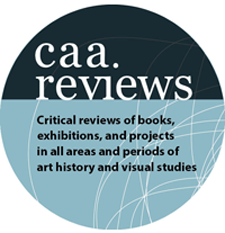 Dissertation titles in art history and visual studies from American and Canadian institutions, both completed and in progress, are published annually in caa.reviews, making them available through web searches. PhD-granting institutions may send a list of their doctoral students’ dissertation titles for 2015 to dissertations@collegeart.org. The complete Dissertation Submission Guidelines regarding the format of listings are now available. CAA does not accept listings from individuals. Improperly formatted lists will be returned to sender. For more information, please write to the above email address or visit the guidelines page. New deadline: January 29, 2016.
Dissertation titles in art history and visual studies from American and Canadian institutions, both completed and in progress, are published annually in caa.reviews, making them available through web searches. PhD-granting institutions may send a list of their doctoral students’ dissertation titles for 2015 to dissertations@collegeart.org. The complete Dissertation Submission Guidelines regarding the format of listings are now available. CAA does not accept listings from individuals. Improperly formatted lists will be returned to sender. For more information, please write to the above email address or visit the guidelines page. New deadline: January 29, 2016.
New and Forthcoming in CAA’s Journals
posted by Joe Hannan — October 19, 2015
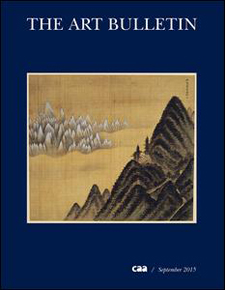 The Art Bulletin
The Art Bulletin
For the first time $500 payday loan today, the cover of The Art Bulletin (September 2015) features a work of Korean art: Watching Mount Kŭmgang from Tanbal Pass, a 1711 painting on silk by Chŏng Sŏn, appears with J. P. Park’s essay on the reception of Chinese painting in early modern Korea. Another first is the inclusion of a video animation as online supplementary material, to accompany Halle O’Neal’s examination of complex pagoda images in premodern Japanese art. The issue also features Kim Sexton’s “Political Portico: Exhibiting Self-Rule in Early Communal Italy,” Nina Athanassoglou-Kallmyer’s “Le Grand Tout: Monet on Belle-Île and the Impulse toward Unity,” and Florina H. Capistrano-Baker’s “Whither Art History in the Non-Western World: Exploring the Other(’s) Art Histories.” The September issue includes reviews of an exhibition at the Metropolitan Museum of Art on the global trade in textiles from 1500 to 1800, and of a book on German philosophy and optical media.
Art Journal
A highlight of the recently published Summer 2015 issue of Art Journal is “Yoga for Adjuncts: The Somatics of Human Capital,” a project by the artist Christian Nagler. The issue features four essays: Caroline Wallace on the 1968–71 protests by the Black Emergency Cultural Coalition of exhibitions at the Whitney Museum of American Art; Christopher Tradowsky on the current work of the Office of Blame Accountability as it relates to the Nietzschean concept of ressentiment; Raven Falquez Munsell concerning the focus of the 1974 Venice Biennale on the previous year’s coup in Chile; and, in the cover story, Silvia Bottinelli on emblems and themes of nomadism in Italian art and architecture of the 1960s and 1970s. The Reviews section covers books on the impact of feminism in museum culture, the aesthetics of surface in contemporary art and media, and the artist Bruce Nauman.
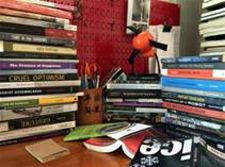 Art Journal Open
Art Journal Open
Art Journal Open published the third and final installment of the curator Dina Deitsch’s conversation series: “Two for One: robbinschilds in Conversation with Dina Deitsch.” In this interview, Deitsch speaks with the choreographer-dancer duo robbinschilds (Sonya Robbins and Layla Childs) about Construction I–IV, a group of works they created for Temporary Structures: Performing Architecture in Contemporary Art, a 2011 exhibition Deitsch curated at the deCordova Sculpture Park and Museum.
Art Journal Open launched a new feature this summer, Bookshelf, in which art professionals of all stripes share their personal reading lists. Among those published thus far are Rebecca M. Brown, Lenore Chinn, Megan A. Sullivan, Steven Nelson, Matthew Israel, and Judith Rodenbeck. Bookshelf submissions are accepted on a rolling basis; for consideration please send a brief description of what you’re reading and why, a list of the titles (including author, publisher, and year of publication), and a photo of your books to art.journal.website@collegeart.org.
 caa.reviews
caa.reviews
CAA’s online-only journal continues to publish timely reviews of books and exhibitions, providing a permanent record of critical opinion on subjects as diverse as Italian fashion (Ross K. Elfline’s review of the exhibition catalogue Italian Style: Fashion since 1945), royal art in Ming China (Craig Clunas’s Screen of Kings: Royal Art and Power in Ming China, reviewed by Lihong Lui), black performance in contemporary art (Diane Mullin reviews the Radical Presence: Black Performance in Contemporary Art at the Walker Art Center), and digital art history (Paul B. Jaskot on HyperCities: Thick Mapping in the Digital Humanities by Todd Presner, David Shepard, and Yoh Kawano). Visit the open-access journal for coverage in all areas of the visual arts.
Taylor & Francis
In addition to their print subscription(s), CAA members receive online access to current and back issues of Art Journal and The Art Bulletin. Taylor & Francis also provides complimentary online access to Word and Image, Digital Creativity, and Public Art Dialogue for CAA members. To access these journals, please log into your account and click the link to the CAA Online Publications Platform on Taylor & Francis Online.




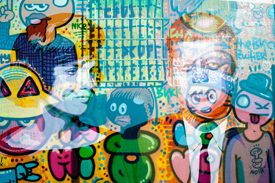 David Bethune, Basquiat Does the Kennedys, 2014, digital photograph, dimensions variable (artwork © David Bethune)
David Bethune, Basquiat Does the Kennedys, 2014, digital photograph, dimensions variable (artwork © David Bethune)
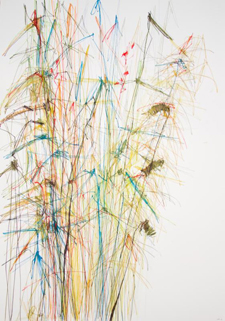 Michael Rich, Reeds and Whispers, 2015, mixed media on paper, 39 x 28 in. (artwork © Michael Rich)
Michael Rich, Reeds and Whispers, 2015, mixed media on paper, 39 x 28 in. (artwork © Michael Rich)
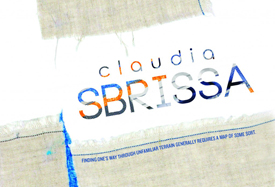 Invitation card for Claudia Sbrissa’s Finding One’s Way through Unfamiliar Terrain Generally Requires a Map of Some Sort (2015)
Invitation card for Claudia Sbrissa’s Finding One’s Way through Unfamiliar Terrain Generally Requires a Map of Some Sort (2015)

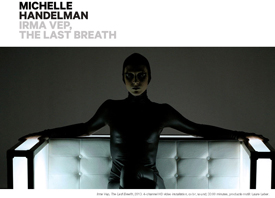 Invitation card for Michelle Handelman’s Irma Vep, the Last Breath (2013)
Invitation card for Michelle Handelman’s Irma Vep, the Last Breath (2013)
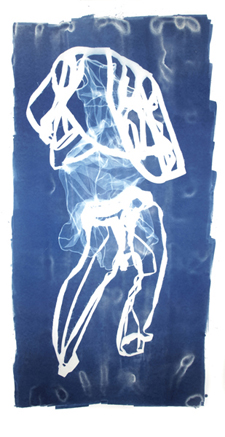 Mary Beth Heffernan, Blue 5, 2011, cyanotype photogram, 96 x 51 in. (artwork © Mary Beth Heffernan)
Mary Beth Heffernan, Blue 5, 2011, cyanotype photogram, 96 x 51 in. (artwork © Mary Beth Heffernan)